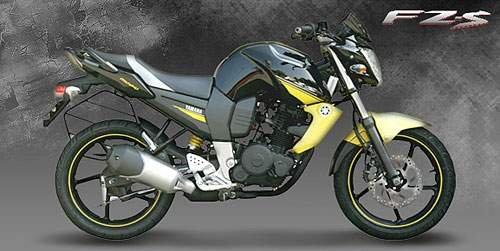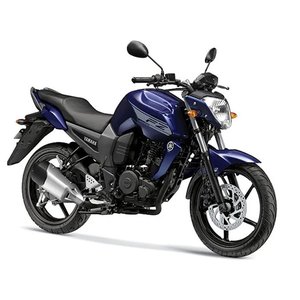Yamaha FZ 16 (2008-2022): The Streetfighter That Redefined Everyday Riding

Introduction
When Yamaha unveiled the FZ 16 in 2008, it wasn’t just launching another commuter bike – it was introducing a streetfighter attitude to the 150cc segment. For 14 years, this motorcycle became a staple in urban jungles and winding backroads alike, blending muscular styling with Yamaha’s engineering pragmatism. Having recently spent a week with a well-maintained 2019 FZ-FI variant, I can confirm this machine still punches above its weight class in delivering pure riding joy. Let’s dissect why this generation remains relevant even as newer models crowd the market.
Design & Stance: The Musclebound Commuter
The FZ 16’s design language screams “street dominance” – a radical departure from the anodyne commuters of its era. That 13-liter fuel tank isn’t just functional; its exaggerated musculature gives riders a psychological boost, as if you’re piloting a scaled-down MT-07. Later variants (post-2016) sharpened the aggression with LED headlights – a welcome upgrade that throws a crisp white beam while maintaining the predatory “cyclops eye” look.
Yamaha’s color choices evolved intriguingly over the years. Early models relied on primary colors, but the 2022 Metallic Black and Racing Blue schemes I tested had a premium depth, hiding road grime better than expected. The switch to a two-level seat in 2017 was genius – that subtle rear hump locks you in during spirited riding without compromising the flat profile that’s ideal for pillions.
Engine & Performance: Small Bore, Big Heart
Swing a leg over, thumb the starter (no kick lever here – progress!), and the 153cc air-cooled mill settles into a lumpy idle characteristic of single-cylinder engines. Don’t let the vibrations fool you – this engine is a masterclass in usable power delivery.
The carbureted models (2008-2017) require a gentle choke on cold mornings, but once warmed up, they pull cleanly from 2,500 RPM. The fuel-injected variants (post-2017) eliminate that ritual, firing up instantly with a crisp throttle response. Both versions share the same power philosophy – 14 HP might seem modest, but it’s delivered in a linear surge that makes you feel faster than you actually are.
Cruising at 60-70 km/h (37-43 mph) is where this engine sings, the vibrations smoothing out into a pleasant thrum. Push past 80 km/h (50 mph) and the lack of a sixth gear becomes apparent, though the motor never feels strained – just vocal. My test bike’s digital console showed 115 km/h (71 mph) flat out, with enough in reserve for quick overtakes.
Handling & Ride Quality: Urban Acrobat
Where the FZ 16 truly shines is in its chassis dynamics. The diamond frame feels taut yet forgiving, absorbing potholes that would send stiffer bikes skipping. At 137 kg (302 lbs) wet, flicking through traffic is effortless – I found myself taking the long way home just to carve through backstreets.
The 41mm telescopic forks offer 130mm (5.1") of travel, tuned for compliance rather than track precision. Combined with the 7-step adjustable monocross rear suspension (post-2016 models), it strikes a Goldilocks balance between sporty handling and commuter comfort. Dial the rear preload to position 3, and you’ve got a setup that manages both solo canyon runs and two-up grocery hauls.
Braking evolved significantly across generations. Early models’ front disc/rear drum combo required planning ahead, but the ABS-equipped front brake (from 2018) inspires confidence. Still, upgrading to sintered pads (available at MOTOPARTS.store) transforms stopping power – a $40 mod that’s worth every cent.
Competition: How It Stacks Up
The 150cc naked bike segment is fiercely contested. Here’s how the FZ 16 fares against key rivals:
1. Honda CB Hornet 160R
Honda’s answer to the FZ trades raw character for refinement. Its 162.7cc engine makes 15.5 HP but feels clinical compared to Yamaha’s visceral power delivery. The Hornet’s USD forks offer better dive control, but the FZ counters with more communicative steering.
2. Bajaj Pulsar NS160
The NS160’s liquid-cooled 160.3cc engine (15.5 HP) dominates spec sheets, but real-world riding reveals a peaky powerband. The FZ’s torque-focused setup is more forgiving in stop-and-go traffic. Bajaj’s build quality has improved, but Yamaha’s fit-and-finish still leads.
3. Suzuki Gixxer SF 150
Suzuki’s faired version undercuts the FZ on price but can’t match its street presence. The Gixxer’s 14.8 HP engine revs more freely, yet the FZ’s mid-range grunt makes daily riding less frenetic.
What the FZ 16 lacks in outright power, it compensates with Yamaha’s chassis magic – few bikes in this class feel as planted during aggressive cornering.
Maintenance: Keeping the Legend Alive
Owning an FZ 16 is refreshingly straightforward, but these pro tips will keep your steed in prime condition:
1. Air Cooling Simplicity
No radiators to worry about, but ensure the cooling fins stay debris-free. Consider MOTOPARTS.store’s fin guards ($29) for added protection.
2. Carburetor Care (Pre-2017 Models)
The BS26 carb is reliable but sensitive to stale fuel. A monthly dose of ethanol treatment (we recommend Yamalube Fuel Stabilizer) prevents clogged jets.
3. Chain Maintenance
The O-ring chain lasts 20,000+ km (12,400+ miles) with proper care. Use a grunge brush and MOTOPARTS.store’s Synthetic Chain Lube ($15) every 500 km (310 miles).
4. Brake Upgrades
Later models benefit from steel-braided lines ($65) to reduce squishiness. Drum brake users should adjust shoes every 6,000 km (3,700 miles).
5. Suspension Tuning
The adjustable rear shock invites experimentation. For 75 kg (165 lb) riders, setting 3 works for most conditions. Heavier riders should max preload and consider upgrading to adjustable fork oil weights.
Conclusion: The Everyday Thrill Machine
Spending time with the FZ 16 reveals why it endured for 14 years without radical changes. It’s not the fastest or most technologically advanced 150cc bike, but it delivers something more valuable – pure, unadulterated riding joy. The riding position coddles newbies yet allows veterans to scrape pegs (ground clearance: 165mm/6.5"). The engine charms with its mechanical honesty in an age of sanitized fuel injection.
Yamaha’s real triumph is creating a motorcycle that feels special on every ride – whether you’re threading through Manila traffic or hunting apexes on weekend twisties. As I handed back the keys, I found myself mentally browsing MOTOPARTS.store for handlebar risers and a sportier exhaust – testament to a bike that makes you want to personalize rather than replace.
For riders seeking an affordable gateway into Yamaha’s performance DNA, the FZ 16 remains a compelling proposition. Its longevity proves that in the motorcycle world, evolution sometimes beats revolution.
Specifications sheet
| Engine | |
|---|---|
| Stroke: | Four-stroke |
| Ignition: | CDI |
| Max power: | 10 kW | 13.0 hp |
| Max torque: | 14 Nm |
| Fuel system: | Carburetor (BS26) or Fuel Injection (depending on model) |
| Max power @: | 7500 rpm |
| Displacement: | 153 ccm |
| Fuel control: | SOHC |
| Max torque @: | 6000 rpm |
| Configuration: | Single |
| Cooling system: | Air-cooled |
| Compression ratio: | 9.5:1 |
| Number of cylinders: | 1 |
| Dimensions | |
|---|---|
| Wheelbase: | 1330–1335 mm (52.4–52.6 in) |
| Dry weight: | 126 |
| Wet weight: | 137 |
| Seat height: | 790–800 mm (31.1–31.5 in) |
| Overall width: | 770–780 mm (30.3–30.7 in) |
| Overall height: | 1045–1080 mm (41.1–42.5 in) |
| Overall length: | 1975–1990 mm (77.8–78.3 in) |
| Ground clearance: | 160–165 mm (6.3–6.5 in) |
| Fuel tank capacity: | 12–13 L (3.17–3.43 US gal) |
| Drivetrain | |
|---|---|
| Clutch: | Wet multiplate |
| Final drive: | chain |
| Gear ratios: | 1st 2.714 (38/14), 2nd 1.789 (34/19), 3rd 1.318 (29/22), 4th 1.045 (23/22), 5th 0.875 (21/24) |
| Transmission: | 5-speed |
| Primary reduction ratio: | 3.409 / 2.857 |
| Maintenance | |
|---|---|
| Rear tire: | 140/60-17 |
| Engine oil: | 10W-40 (inferred) |
| Front tire: | 100/80-17 |
| Brake fluid: | DOT 4 |
| Spark plugs: | NGK CR8E or NGK CR8EIX |
| Engine oil capacity: | 1.2 |
| Engine oil change interval: | Every 5000 km or 2 years (recommended) |
| Valve clearance (intake, cold): | 0.10–0.20 mm |
| Valve clearance check interval: | 24,000 km (15,000 mi) |
| Valve clearance (exhaust, cold): | 0.20–0.30 mm |
| Additional Features | |
|---|---|
| Battery: | 12V, 2.5–4.0 Ah |
| Lighting: | LED headlight (on newer models) |
| Instruments: | Digital display |
| Color options: | Metallic Black, Racing Blue, Red, Flaming Orange (model-dependent) |
| Chassis and Suspension | |
|---|---|
| Frame: | Diamond |
| Rear brakes: | 130 mm drum or single disc (model-dependent) |
| Front brakes: | Single 257–310 mm disc (ABS on some models) |
| Rear suspension: | Monocross type (adjustable on some models) |
| Front suspension: | 41mm Telescopic fork |
| Rear wheel travel: | 120 mm (4.7 in) |
| Front wheel travel: | 130 mm (5.1 in) |



















